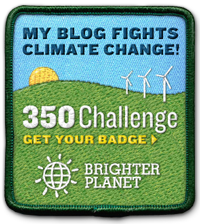V5 Green Day
Starting from 27th February 2010, every Saturday will be our Green Day in V5.
The cafe and V5 Mini Market operators will not be providing you the following items:
1) Lunch box
2) Plastic bags
3) Drinking plastic
The aim of this V5 Green Day is to reduce the wastes produced in V5. By giving full cooperation on this day, we help saving the Earth actually :)
Thus you may opt the following alternatives:
1) Have your meal in the cafe - it is worth washing the dishes rather than recycling the recyclable lunch boxes :)
2) Bring your own food container - why should you pay 20cents extra for your meal when you take away your meal? ;)
3) Bring your own used plastic bags when you want to shop at the mini market - or just use your two hands! :)
As the biggest residential college in UTP, we all can make a large difference if we cooperate in this campaign. Our next generation will be thanking us for what we're doing now! ;)
The cafe and V5 Mini Market operators will not be providing you the following items:
1) Lunch box
2) Plastic bags
3) Drinking plastic
The aim of this V5 Green Day is to reduce the wastes produced in V5. By giving full cooperation on this day, we help saving the Earth actually :)
Thus you may opt the following alternatives:
1) Have your meal in the cafe - it is worth washing the dishes rather than recycling the recyclable lunch boxes :)
2) Bring your own food container - why should you pay 20cents extra for your meal when you take away your meal? ;)
3) Bring your own used plastic bags when you want to shop at the mini market - or just use your two hands! :)
As the biggest residential college in UTP, we all can make a large difference if we cooperate in this campaign. Our next generation will be thanking us for what we're doing now! ;)
Spare something for our next generation - they would prefer something green..












































